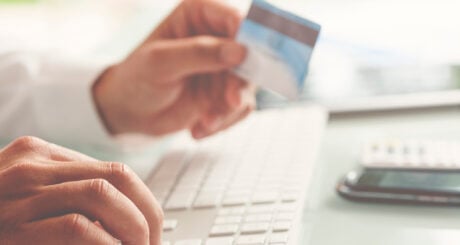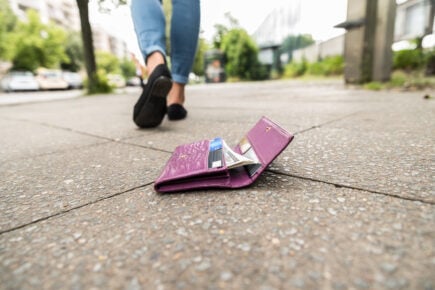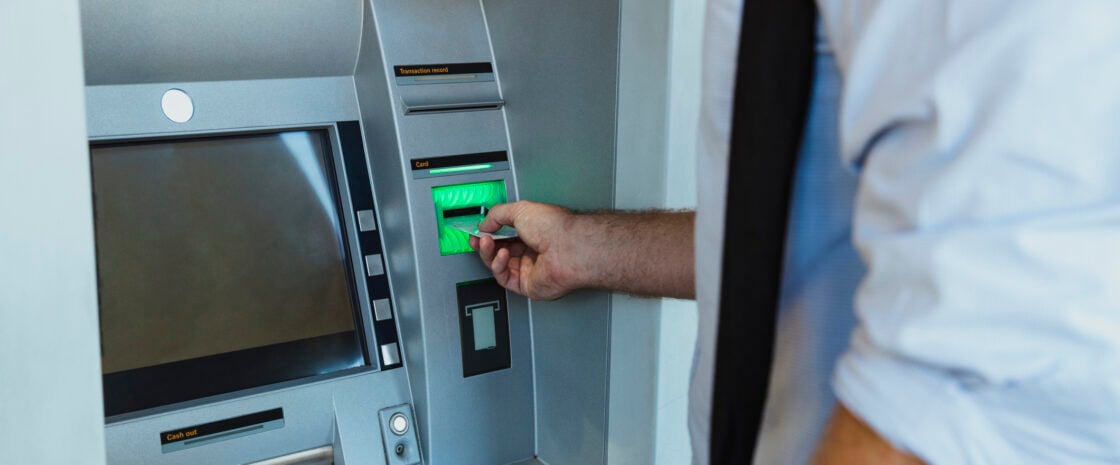Credit card skimming fraud fell by more than 50% to a new record low from 2017 to 2021, but that doesn’t mean the risks have disappeared — skimming fraud cost Australians more than $5.5 million in 2021[1]. Here’s what you need to know to protect yourself from the dangers of card skimmers.
What is a card skimmer?
Card skimmers are devices criminals use to steal debit and credit card information. The skimmer can be a standalone device or something installed at an ATM, EFTPOS terminal, ticket kiosk, parking metre, cash register, petrol pump or other places you’d use a card.
Some businesses know the signs to look for and how to protect their EFTPOS terminals. Still, experienced criminals can find ways to intercept these terminals regardless — and they may even be operating from within a store.
» MORE: Lost or stolen credit card? Here’s what you need to know
How does a card skimmer work?
Card skimmers scan — or ‘skim’ — a card’s magnetic strip to capture critical details stored on a card, such as
- The card number
- Expiration date
- CVV security code
- Cardholder name.
Some skimmers also use a fake keypad to capture the PIN when typed in.
Criminals then use information stolen by card skimming in a variety of ways, including:
- Withdrawing cash from the ATM
- Creating a counterfeit or ‘cloned’ card
- Making fraudulent purchases online or over the phone
- Transferring money
- Opening new accounts
- Selling the information to other criminals and credit card scammers.
Debit and credit cards that use chip technology are usually more protected against card skimmers since the microchip stores encrypted information. However, these cards still use magnetic stripes and remain at risk of skimming.
What does a card skimmer look like?
Card skimmers are designed not to stand out and are usually smaller than a deck of cards. Since card skimmers often look like regular card readers, they can be challenging to spot — but that doesn’t mean they’re impossible to identify.
Card skimmers come in all shapes and sizes and have varying degrees of complexity, but generally show up in one of three forms:
- Overlay skimmers are made of thin, flexible plastic and typically set over the ATM or card reader. They may look like a legitimate part of the machine.
- Internal skimmers are ultra-thin devices installed in the card reader. Thieves position them between the legitimate reader and the chip or stripe on the card you insert. Sometimes, these are called ‘shimmers’.
- External skimmers are devices positioned somewhere near a card reader. These could be micro cameras that capture footage of you inputting your PIN or another instrument that can pick up data from further away.
Commonwealth Bank of Australia has examples of what a card skimmer could look like at an ATM, but criminals are nothing if not inventive, and signs of skimming devices can quickly become outdated.
» MORE: How to protect yourself against credit card scams
How to spot a card skimmer
Instead of focusing on what a card skimmer looks like, it’s best to familiarise yourself with the following signs of skimming so you can protect yourself.
Your card was tapped twice
Skimming devices at cash registers may be placed nearby rather than fitted to the register, so your card gets tapped twice: once on the skimmer and once on the EFTPOS terminal.
How to protect yourself: Do not hand over your card when shopping in-store. Instead, tap it yourself. If you need to enter your PIN, try to cover the keypad in case a micro camera has also been fitted.
The card reader looks odd or damaged
Thieves often damage card readers when attempting to install a skimming device. If you notice anything strange or the machine looks tampered with, it’s a good idea to be cautious.
How to protect yourself: Before inserting your card, quickly scan the machine and look out for signs of tampering, such as
- A raised or unusually thick keypad
- Loose or mismatched components
- Misaligned parts
- Colours or materials that don’t match the rest of the ATM’s features.
Walk away and find another ATM if anything raises your suspicion.
The ATM’s card reader doesn’t have a flashing light
When an ATM’s card reader doesn’t have a flashing light, it might be the case that a skimming device has been installed over it and is covering the light.
How to protect yourself: Whenever possible, compare the card reader you plan to use with nearby card readers. If you notice anything different or strange, don’t use it.
Additional devices nearby
Thieves often use external devices, such as micro-cameras and memory cards, to support their skimming.
How to protect yourself: Be cautious if you notice additional devices near the card reader. Check for unusual objects or tiny holes that could conceal a camera.
Adhesive residue
Adhesive often holds skimmers in place, so it’s a red flag if you see glue or residue around the reader or on your card after use.
How to protect yourself: Before you insert your card, take a moment to inspect the ATM or card reader. Try to tug or wiggle it to see if it is securely attached. Skimmers may come off easily when pulled.
The ATM looks rarely used or is located outside
Outdoor ATMs are a great convenience, but limited security and low foot traffic can embolden thieves to set up a skimmer.
How to protect yourself: Whenever possible, avoid ATMs that are poorly lit or located in secluded areas or outside. It stands to reason that it’s less likely that thieves will tamper with an ATM inside a shopping mall.
Your phone shows suspicious Bluetooth devices
Criminals may use Bluetooth devices or Wi-Fi networks to capture data wirelessly.
How to protect yourself: Use your phone’s settings to scan for nearby Bluetooth devices and Wi-Fi networks. Trust your instincts if you notice something suspicious — especially if you don’t see anyone around who may be using the network.
» MORE: 9 things to know before getting your first credit card
How to protect yourself against card skimmers
Spotting the signs of card skimming isn’t your only line of defence. You can also take steps to protect yourself against card skimming:
- Stick to ATMs and payment terminals owned by reputable brands in well-lit, safe areas with plenty of foot traffic.
- Use contactless payments, like mobile and wearable wallets, whenever possible.
- Regularly monitor your account and card statement for unusual activity or charges you don’t recognise.
- Enable push notifications from your bank to receive transaction alerts. That way, you’re informed in real-time.
- Maintain up-to-date software on smartphones, computers and tablets.
- Cover your PIN when you enter it by hand.
- Stay aware and trust your instincts if something seems suspicious.
What to do if your card was skimmed
It can be a shock to realise a card skimmer may have stolen your data, but it’s essential to stay calm and act fast to limit the damage.
- Contact the owner of the business or ATM where you encountered the card skimmer.
- Block or lock your card to temporarily stop new purchases if you aren’t sure fraud occurred.
- Cancel your card permanently and arrange a replacement if you know a skimmer stole your information.
- Call your bank to alert them to the issue so they can freeze your account and investigate the fraud.
- Report the skimmer to the Australian Competition and Consumer Commission (ACCC) by filling in a short online form. Making them aware of the skimmer helps them to warn others.
- File a police report. Contact the police in your state or territory, or call the police assistance line on 131 444. You can also report it to Crime Stoppers on 1800 333 000.
- Order a free copy of your credit report to ensure no one has used your name or identity to run up any debts.
Article Sources
-
Australian Payments Network, “Australian Payment Fraud 2022,” accessed July 28, 2023.
DIVE EVEN DEEPER

How To Lock, Block Or Freeze Your Credit Card
A card lock is essentially an on-off switch that allows you to temporarily freeze or block your credit card and most debit cards.

How to Spot and Avoid Credit Card Scams
Knowledge is power, so being able to spot the signs of credit card scams can help protect you and your money.

Lost Credit Card? Here’s What to Do
If you lost your credit card, don’t panic. Lock your card, then contact your issuer and take steps to limit the damage of fraud.

What is a virtual credit card?
A virtual credit card uses a randomly generated number tied to an existing account to help make digital payments more secure.

